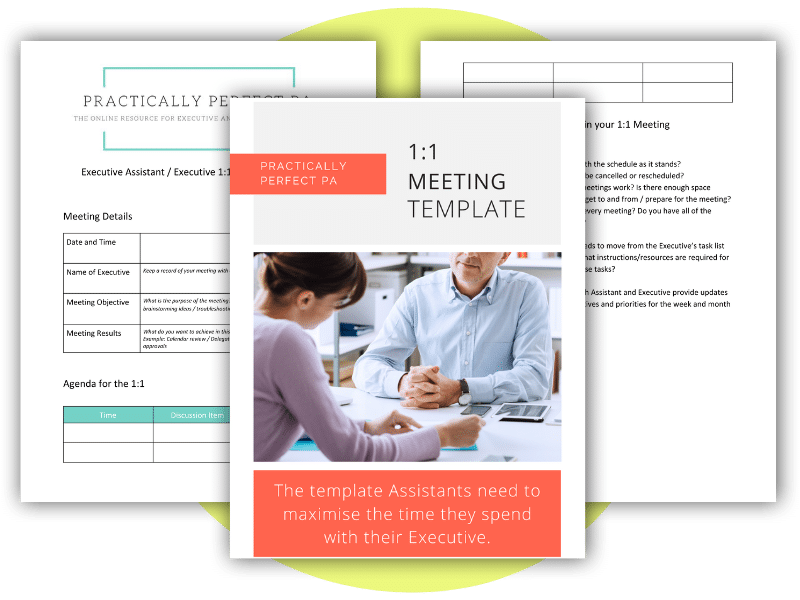How to identify and fix problems at work
Problem-solving is one of the critical skills that office employees will need by 2020. You will see this skill more and more on job applications for Assistants (if you aren’t already) because we are often called upon to put out fires and deal with problems that nobody else in the office wants or knows how to solve.
Problem-solving for Assistants can range from the straightforward issues that everyone should be addressing, like cleaning out the fridge at the end of the week or replacing the toner in the printer. To incredibly complicated problems, such as the Assistant team in the business isn’t working effectively, we need to replace the IT supplier, we have to move offices.
Fixing problems at this level is hard, but something Assistants must take on if we want to be seen as a business asset and not just an administrative function. So, how do we go about identifying and fixing problems at work? Here are the seven steps you need to take when solving problems.
Step 1: Find the right problems to solve.
You might see lots of problems within your organisation to solve, but you might not necessarily have the authority to address them or the skillset, so you have to find the areas to make a difference. For Assistants, we come into contact with so many different parts of the organisation that we can see when processes and procedures aren’t quite working. Still, we might not be able to solve those issues as we can others. Finding the right problems that you can get stuck into and actually solve makes a difference.
Step 2: Identify and define the problem.
It can feel like we are continually putting out fires and reacting quickly to get these issues resolved. If you can relate, I would suggest that you have quite a few problems that can be rapidly solved – it is just finding the space in your day to figure out how to fix these ‘quick win’ issues. This is down to you being proactive rather than reactive. So, take an afternoon (ideally when your Executive is in a long meeting or out of the office), book yourself into a meeting room and grab a notebook. Write down all of the issues that your Executive, team, department come to you with regularly. These are your ‘quick win’ problems that you can solve using your skillset. If people are coming to you with these problems, you also have the authority to fix them.
Once you have your list, then you can start to define the problem. Ask these questions:
- Why is the issue occurring?
- How do you know it is a problem?
Step 3: Understand who is affected by the problem
Along with the questions above, you should also determine who the problem is affecting and the knock-on effect. Take, for example, a common problem that Assistants face – your Executive doesn’t take the right papers to their meetings. This affects your Executive, and it also affects everyone who attends the meeting because your Executive is not prepared. Workplace problems often affect more people than you might realise, so do try to get a sense of how big the issue is and how many people in the organisation it affects.
Step 4: Brainstorm possible solutions
You don’t need to work on your own when trying to solve workplace issues. Let your Executive know that you have identified a problem and you are trying to resolve it. Brainstorm with your Executive, your team, other Assistants in the business and of course, there is always Google to use for possible solutions. Google is the first port of call for any issues I face – you don’t have to reinvent the wheel. If someone else has come up with a good solution… Copy it!
Step 5: Select the best course of action
This is the best bit! Fixing the problem. Once you have brainstormed your ideas (and the answer can be straightforward), select what you think is the best course of action. Make sure you document how you have come to this conclusion and the process that will fix the problem.
Step 6: Implement the solution
Implementing the solution is often the hardest part of actually fixing a problem because it means changing someone’s behaviour (and that is a whole other blog post!). Workplace problems are often solved by sticking to a process that works and making sure everyone does their bit in the process consistently. This means that you have to be a champion of the process and work with your key stakeholders to ensure that everyone is on board and knows what they have to do. Communicate regularly and make sure everyone understands the process and their part in it.
Step 7: Monitor the issue and make sure it continues to be resolved
The last step is making sure that the problem stays resolved. Again this is tricky because we are all creatures of habit, and it can be easy to slide back into the old ways of working. Monitoring the issue ensures that:
- there is no backsliding into old habits
- you can react to any future problems
- you can share the learning with other departments in your company
Good luck with your problem-solving endeavours. If you can find the time to identify and solve issues within your organisation, you really will be seen as a strategic thinker and a real business asset.





